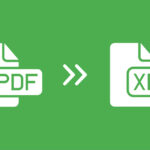Donation letters are one of the nonprofits’ most essential tools for gathering donations. They also help donors become regular supporters.
Donation letters can be sent to individual donors, families, and corporations. They can be sent via email or mail.
The Purpose of Donation Letters
If you are a nonprofit, you likely have sent out a donation letter at some point in your organization’s history. Whether you want to raise money or in-kind donations, these letters can help get the ball rolling and build your relationship with potential donors.
The most successful donation request letters are connected to a particular project or campaign. They are also helpful when donors want immediate results and feel they are contributing to something bigger than themselves.
Creating a solid story helps to warm your reader up before they make their donation decision. The report should involve characters, a problem, and the resolution of that problem.
Explain the problem thoroughly and be honest about what people are facing. If you’re addressing homeless issues, for example, give examples of real-life situations and illustrate how they have affected the lives of those who live there.
Then, it would help if you described your organization’s efforts to tackle the issue and what a donation would do for those struggling. This is an integral part of the letter because it helps show your reader that you’re a legitimate organization working to help people overcome their hardships.
Finally, thank your donor for considering the gift and ask them to sign the letter. Choose an employee, board member, or critical volunteer to represent your organization’s collective work. This is one of the most effective persuasion strategies and promotes a personal connection between your organization and your donor.
The Goal of Donation Letters
Donation letters are an effective way to communicate your nonprofit’s needs and gain support. They also allow you to share your story, show donors how their donations will make a difference, and get them involved in your organization.
A good donation letter will pull in potential donors by inspiring them to believe in your organization’s mission and demonstrating how their gift will impact the lives of those in need. It is important to include human interest stories and a strong call-to-action (CTA) in your letter.
The best time to send these letters is around significant events and holidays in your nonprofit’s calendar. These are times when people are likely to be more active and ready to donate.
It would help if you also encouraged recurring donations by including an option to make these automatically through your online form or paper donation receipts. This makes it easier for people to give and gives you an easy way to track their contributions.
If you are not getting the results, you want from your donation letter campaigns, experiment with different sending frequencies and times until you reach the desired results. This will allow you to learn more about your ideal donor and how best to get them with your messages. It will also help you determine how much you need to spend on your fundraising appeals. Use that data to inform future campaigns.
The Target Audience of Donation Letters
A nonprofit’s primary fundraising tool is donation request letters sent to previous or prospective supporters. These letters are often a part of fundraising campaigns, like upcoming events or giving holidays, and are sent in the mail or email.
A good donation letter should be written with the recipient in mind, addressing their specific needs and interests. It should explain why a donor’s contribution is significant and make them feel it will positively impact their community.
Donation request letters should also be personalized and short, to the point. They should be tailored to the donor’s past and current gift history and crafted to appeal to different generations.
Ideally, the letter should include information about a time-sensitive campaign or project. It should contain a clear call to action and encourage the reader to donate as soon as possible.
Another key feature is that it should clearly state what the money will be used for and how it will benefit your cause. This helps the recipient evaluate whether the donation is worth their time and effort.
It’s also best to focus on a particular program or initiative rather than describing your entire organization in a single letter. This is a better approach to gaining donations because it allows the reader to choose which area of the project they are most interested in helping.
The Format of Donation Letters
A suitable donation letter format can distinguish between a potential donor giving and ignoring your request. While each fundraising letter should have unique elements, several essential template parts should be present in every note, regardless of the cause.
Donation request letters are a nonprofit’s most influential and versatile marketing tool. They cover a specific issue and provide details about the organization’s impact, which can help recipients feel more compelled to donate.
They are usually shorter and more simplistic than pamphlets or booklets and are often used as a standalone marketing pieces. However, they can also be incorporated into welcome packets for new donors.
For example, a letter from a school to a prospective donor could include details about the student body and programs and events that the school hosts. This can help the reader understand the value of the school and how it is helping students become successful members of the community.
The header and subject line of a donation letter are also important, as these will help entice recipients to open the letter and read on. The best header/subject lines are short and attention-grabbing, highlighting why your message is relevant and appealing to readers.

 Methods for Creating High-Quality Custom Apparel with Direct-to-Film Transfers
Methods for Creating High-Quality Custom Apparel with Direct-to-Film Transfers  How SASE Solutions Empower Productive Workforces in a Digital Era
How SASE Solutions Empower Productive Workforces in a Digital Era  Excel vs PDF: Which Dominates Document Sharing in 2025? (Data-Driven Comparison)
Excel vs PDF: Which Dominates Document Sharing in 2025? (Data-Driven Comparison)  TitaniumInvest.com Money 2024: AI‑Driven Tools Outperform Traditional Banking
TitaniumInvest.com Money 2024: AI‑Driven Tools Outperform Traditional Banking  Why Your Link Building Efforts Might Fail
Why Your Link Building Efforts Might Fail  How to Request or Give Remote Control in a FaceTime Call on iPhone
How to Request or Give Remote Control in a FaceTime Call on iPhone  The Rise of Intelligent Automation in Business Operations
The Rise of Intelligent Automation in Business Operations  The Best Ideas for Designing Your Custom Printed Ring Binder
The Best Ideas for Designing Your Custom Printed Ring Binder  How Technology is Changing the Way We Play Hearts
How Technology is Changing the Way We Play Hearts 